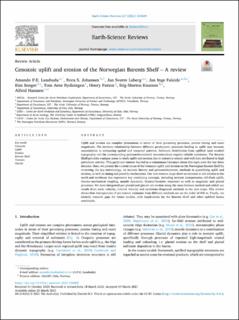| dc.contributor.author | Lasabuda, Amando Putra Ersaid | |
| dc.contributor.author | Johansen, Nora | |
| dc.contributor.author | Laberg, Jan Sverre | |
| dc.contributor.author | Faleide, Jan Inge | |
| dc.contributor.author | Senger, Kim | |
| dc.contributor.author | Rydningen, Tom Arne | |
| dc.contributor.author | Patton, Henry | |
| dc.contributor.author | Knutsen, Stig-Morten | |
| dc.contributor.author | Hanssen, Alfred | |
| dc.date.accessioned | 2021-04-16T07:40:06Z | |
| dc.date.available | 2021-04-16T07:40:06Z | |
| dc.date.created | 2021-03-29T08:18:59Z | |
| dc.date.issued | 2021 | |
| dc.identifier.citation | Earth-Science Reviews. 2021, 217, . | en_US |
| dc.identifier.issn | 0012-8252 | |
| dc.identifier.uri | https://hdl.handle.net/11250/2738012 | |
| dc.description.abstract | Uplift and erosion are complex phenomena in terms of their governing processes, precise timing and exact magnitude. The intricate relationship between different geodynamic processes leading to uplift may increase uncertainties in estimating spatial and temporal patterns. Sediment distribution from uplifted (and eroded) topography and the corresponding paleoenvironmental reconstructions require reliable constrains. The Barents Shelf provides a unique arena to study uplift and erosion due to extensive seismic and well data attributed to high petroleum activity. This particular interest has led to a voluminous literature about this topic over the last three decades. Here, we present the current status of the Cenozoic uplift and erosion on the Norwegian Barents Shelf by reviewing the key terminology, its tectonic history and paleoenvironment, methods in quantifying uplift and erosion, as well as timing and possible mechanisms. Our new erosion maps show an increase in net erosion to the north and northeast that represents key underlying concepts, including tectonic (compression, rift-flank uplift, thermo-mechanical coupling, mantle dynamics, flexural/isostatic response) as well as magmatic and glacial processes. We have integrated pre-glacial and glacial net erosion using the mass balance method and added our results from sonic velocity, interval velocity and sandstone diagenesis methods to the new maps. This review shows that discrepancies of net erosion estimates from different methods are on the order of 500 m. Finally, we identify research gaps for future studies, with implications for the Barents Shelf and other uplifted basins worldwide | en_US |
| dc.language.iso | eng | en_US |
| dc.publisher | Elsevier Science | en_US |
| dc.rights | Navngivelse 4.0 Internasjonal | * |
| dc.rights.uri | http://creativecommons.org/licenses/by/4.0/deed.no | * |
| dc.title | Cenozoic uplift and erosion of the Norwegian Barents Shelf – A review | en_US |
| dc.type | Peer reviewed | en_US |
| dc.type | Journal article | en_US |
| dc.description.version | publishedVersion | en_US |
| dc.source.volume | 217 | en_US |
| dc.source.journal | Earth-Science Reviews | en_US |
| dc.identifier.doi | 10.1016/j.earscirev.2021.103609 | |
| dc.identifier.cristin | 1901527 | |
| dc.relation.project | Norges forskningsråd: 228107 | en_US |
| dc.relation.project | Norges forskningsråd: 223259 | en_US |
| dc.relation.project | Norges forskningsråd: 223272 | en_US |
| dc.description.localcode | This is an open access article distributed under the terms of the Creative Commons CC-BY license, which permits unrestricted use, distribution, and reproduction in any medium, provided the original work is properly cited. | en_US |
| dc.source.articlenumber | 103609 | en_US |
| cristin.ispublished | false | |
| cristin.fulltext | original | |
| cristin.qualitycode | 2 | |

